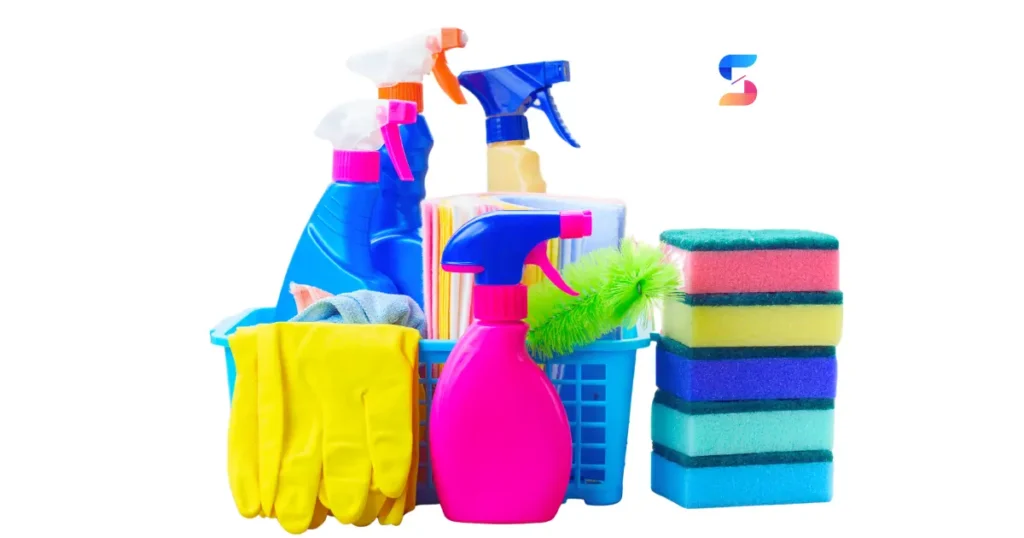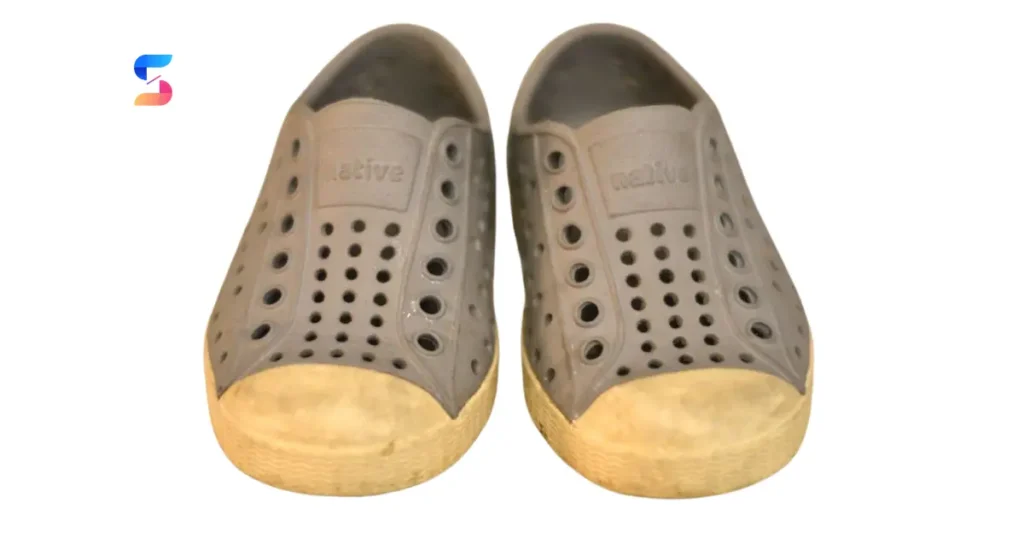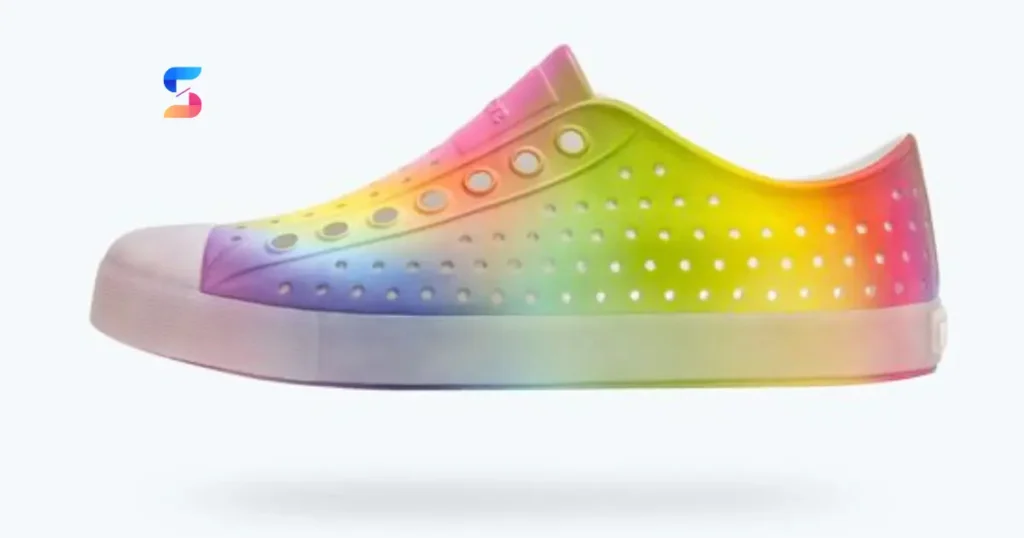Native shoes have become quite popular due to their comfort, versatility, and use of eco-friendly materials. Just like any other pair of shoes, you need to take good care of them in order to keep them looking nice and make them last longer. Do you want to know how to keep your native shoes looking fresh and lasting longer? Let’s go over the steps and techniques for cleaning them!
Jump To Section
Preparing for Cleaning

Gathering Necessary Supplies
Before you begin cleaning your native shoes, ensure you have all the necessary supplies. Here’s what you’ll usually need:
- You can use a mild detergent or a gentle soap.
- You can use a soft-bristled brush or sponge.
- A clean cloth or towel
- Just use water. If you want, you can also try using baking soda, vinegar, or a specialized shoe cleaner.
- Identifying different types of materials
Identifying Material Types
Native shoes are available in a range of materials, such as EVA foam, rubber, and knitted or fabric uppers. Understanding the composition of your shoes is crucial for safe and effective cleaning.
General Cleaning Steps
Surface Dirt Removal
First, you’ll want to get rid of any loose dirt or debris that may be on the surface of your native shoes. You can just use a soft-bristled brush or cloth to gently brush away any dirt from all parts of the shoes, including the soles and crevices.
Washing Techniques
After getting rid of any dirt on the surface, it’s time to give your native shoes a good wash. You can start by filling a basin or sink with lukewarm water and adding a small amount of mild detergent or gentle soap. You can just dip a clean cloth or sponge into the soapy water and give the shoes a gentle scrub in circular motions. That should clean the entire surface nicely.
Drying Procedures
Make sure to give the shoes a good rinse with clean water after washing to get rid of any leftover soap. After that, just gently dry them off using a clean towel or cloth. It’s best to steer clear of heat sources, such as hairdryers, because they can cause harm to certain materials. Just let your native shoes air dry naturally in a well-ventilated area, like you would with any other pair of shoes.
Cleaning Specific Materials
EVA Foam Shoes
To clean EVA foam shoes, like the popular Native Jefferson style, just follow the general cleaning steps mentioned above. It’s best to steer clear of harsh chemicals or abrasive brushes since they can potentially harm the foam material.
Rubber Shoes
Rubber construction makes native shoes like the Apollo Moc easy to clean. Just follow these basic cleaning steps to get rid of dirt and stains from the rubber surface. For tougher stains, you can try using a mild solution of water and vinegar.
Knitted or Fabric Shoes
When it comes to native shoes with knitted or fabric uppers, like the Mercury Liteknit, it’s important to take some extra care when cleaning them. Just make sure to use a gentle detergent and be careful not to scrub too hard. We don’t want to risk damaging the delicate fabric. Another option is to gently brush the fabric to remove any dirt.
Removing Stubborn Stains

Identifying Types of Stains
Different substances can cause stubborn stains on native shoes, such as mud, grease, or ink. Knowing what kind of stain you’re dealing with can really make a difference in how you go about cleaning it.
Effective Stain Removal Methods
- If you have mud stains, just let the mud dry completely, and then use a soft brush to gently brush them off. You can use a damp cloth to get rid of any leftover residue.
- If you happen to come across some grease stains, just grab a little dish soap or laundry detergent and apply it right on the stain. Give it a gentle scrub with a soft brush, and you should be good to go. Make sure to rinse it with water until it’s completely clean.
- If you have ink stains, you can try dabbing the stain with rubbing alcohol or nail polish remover using a cotton ball. Just a heads up: you might want to avoid rubbing too hard because it could end up spreading the ink even more.
Deodorizing Native Shoes
Natural Deodorizing Methods
If you want to keep your native shoes smelling fresh, you can try using some natural deodorizing methods. Here are a few suggestions:
- You can try sprinkling some baking soda inside your shoes to help absorb any odors.
- You can try putting activated charcoal or coffee grounds in a breathable bag and leaving it inside your shoes overnight.
- You can try spritzing a blend of water and essential oils, like tea tree or lavender, into your shoes to give them a nice, refreshing aroma.
Using Commercial Products
You could also consider using specially designed shoe deodorizers or sprays. They are available in stores. It’s always a good idea to follow the manufacturer’s instructions to get the best results. Just be careful not to use too much spray, as it can potentially harm certain materials.
Maintaining Longevity
Storage Tips
It’s really important to store your native shoes properly so that they keep their shape and quality. You’ll want to make sure to keep them in a cool, dry spot, away from any direct sunlight or moisture. It’s best to avoid keeping them in small, enclosed areas for too long, as that can lead to bacteria growth and unpleasant smells.
Frequency of Cleaning
Keeping your native shoes clean is important for making them last longer. It’s a good idea to clean them every few days, especially if they get dirty or come into contact with mud or other substances. To avoid stains and odors and to keep your shoes looking and smelling nice, regular maintenance is important.
Conclusion
So, to sum it up, cleaning your native shoes doesn’t have to be a big deal. Just follow the steps and techniques in this guide, and you’ll be able to easily get rid of dirt, stains, and odors from your shoes without compromising their quality and lifespan. Please remember to use gentle cleaning methods that are appropriate for the specific material of your shoes. And don’t forget to store them properly when you’re not using them! Just make sure to give your native shoes some regular care and maintenance, and they’ll keep on giving you comfort and style for a long time.
FAQs
Q1: Can I clean my native shoes in the washing machine?
It’s generally not recommended to clean native shoes in the washing machine, as the agitation and harsh detergent can damage certain materials, especially delicate fabrics and foams. Hand washing with a gentle soap and lukewarm water is the preferred method to clean native shoes effectively while avoiding potential damage.
Q2: How do I remove odor from my native shoes?
To remove odor from native shoes, you can try natural deodorizing methods such as sprinkling baking soda inside the shoes to absorb odors, placing activated charcoal or coffee grounds in a breathable bag inside the shoes overnight, or spraying a mixture of water and essential oils, such as tea tree or lavender, inside the shoes for a refreshing scent. Alternatively, you can use specialized shoe deodorizers or sprays available in the market, following the manufacturer’s instructions for best results.
Q3: What should I do if my native shoes have stubborn stains?
If your native shoes have stubborn stains, it’s essential to identify the type of stain first to choose the appropriate cleaning method. For mud stains, let the mud dry completely, then gently brush it off with a soft brush and follow up with a damp cloth. For grease stains, apply a small amount of dish soap or laundry detergent directly to the stain, then gently scrub with a soft brush and rinse thoroughly with water. For ink stains, dab the stain with rubbing alcohol or nail polish remover on a cotton ball, being careful not to rub too hard to avoid spreading the ink further. Always test any cleaning method on a small, inconspicuous area of the shoe first to ensure it doesn’t cause damage.



